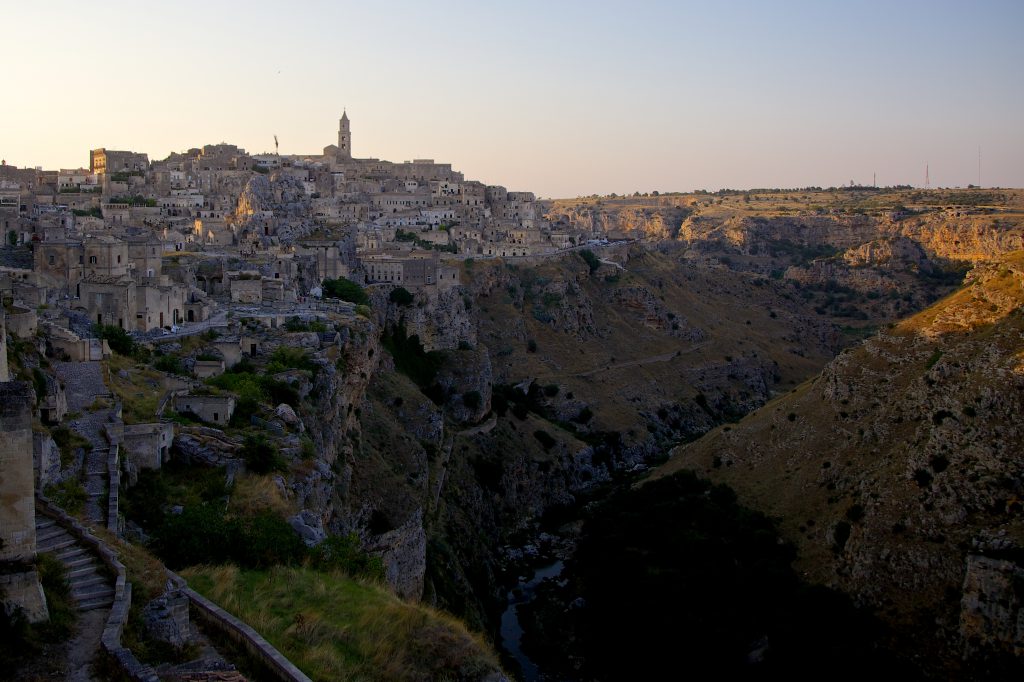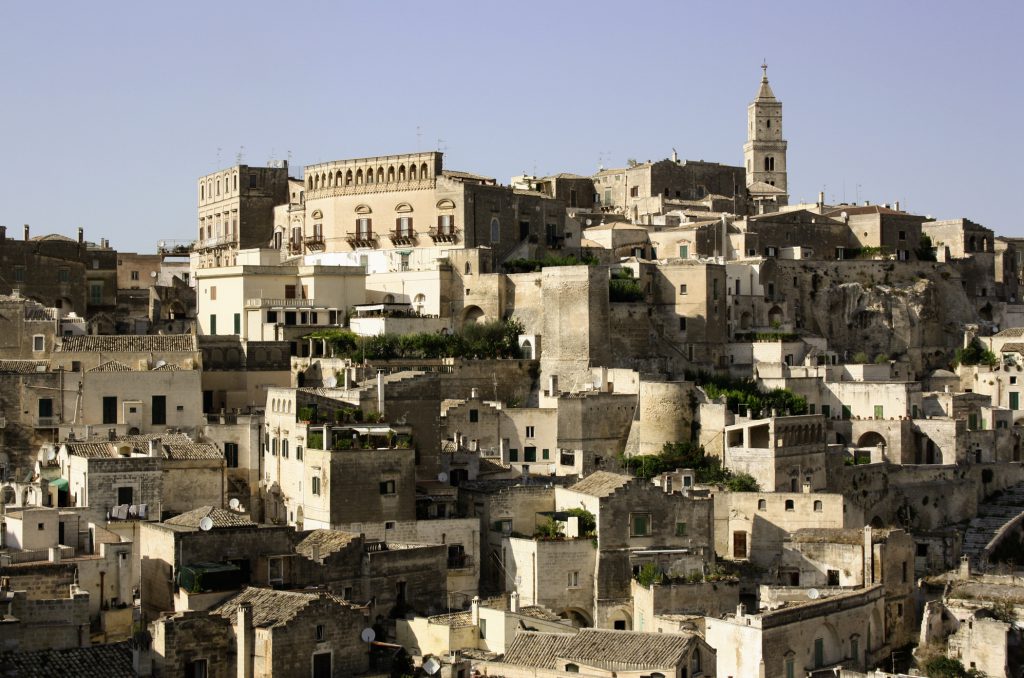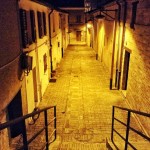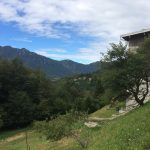Grand Tour through art and history on Dante Alighieri's footsteps
The Sassi di Matera
Matera, the European Capital of Culture 2019
By Patrizio Roversi
One of the aspect that always strikes tourists in Basilicata (or Lucania) is the hospitality of the Lucanians, the locals: it’s simply overwhelming, devoted, full of nuances and attentions, always stimulating.
Christ Stopped at Eboli
In the emblem of Matera there is an ox with a sheaf of wheat in the mouth. The breeding is one of the most important traditions in Basilicata. It has determined, and still determins, not only the landscape, but also the economy and the socio-economical relations. Matera has been nominated as European Capital of Culture 2019, but its cultural roots definitely lies on the agriculture: it is thanks to its peasant culture if Matera is what it is today. Originally, the famous Sassi di Matera were peasants’ houses and barns for the livestock. If you want to know more about it, go and read the book ‘Christ Stopped at Eboli’ by Carlo Levi, or go and see his paintings. Levi was a doctor, an artist and anti-fascist intellectual, who was sent in internal exile in Lucania in 1935, and wrote a passionate description of the local peasant culture, telling about the misery of the labourers. In 1979 they also released a film based on the book.

Matera by Flickr user Francesca Cappa
From Shame to Pride: the Sassi
In 1948 Palmiro Togliatti and Alcide de Gasperi unfolded the scandal of the Sassi di Matera, highlighting the fact that people were living in unsustainable conditions. Their motto was “Matera shame of Italy”. In 1952 a law ensured that the 15.000 inhabitants of the Sassi had to be evacuated and collocated the in new quarters. Luckily, the best architects of the time worked hard to construe new houses that, in some way, respected the lifestyle of Matera-peasants, using the typical material that gives the Sassi their beautiful colour: the tuff. So that Matera is beautiful in its suburbs too. The Sassi had been abandoned until 1986, when another law promoted their retrieval, a retrieval that is still somehow ongoing. In 1993 Matera became a UNESCO World Heritage Site.
Thanks to the beauty of the landscape, to the courage of its inhabitants and the retrieval of its identity (both urban and cultural), Matera is now a symbol of a South that does not give up. Actually, if we look at its history, we’ll find out that all this is not news: in 1514 the people of Matera made a revolution and killed the despotic Count Tramontano. And during the II World War Matera was the first city in the South to rebel against the Germans, who the 21st of September 1943 massacred 15 innocent hostages: amongst the new houses there is a stone that commemorates the place in which the Nazis blew up a building where they were held; and, if I’m not wrong, the stadium also is called “XXI September”. And this is the spirit you capture today in Matera, now that the city is living a magic moment, full with palpable excitement thanks to the nomination as European Capital of Culture. This is what you capture while talking to the locals, walking through Piazza Vittorio Veneto or visiting the many monuments this city offers, from the Palombaro to Sant’Agostino, but even just walking into a shop or visiting a farm.
 Matera by flickr user Gianluca Canello
Matera by flickr user Gianluca Canello
The train
Matera today goes fast like a train, it hasn’t miss the chance to develop, but still… it doesn’t have an actual railway! If you come from the Tyrrhenian coastline, the train from Naples will stop at Ferrandina, which is 37 kilometres and 200 meters far from Matera. If you come from the Adriatic coastline and from Bari there is a small-gauge train, very picturesque but very uncomfortable too, and also suspended on Sundays. There are just buses left. So nowadays there is still a long way to go to reach Matera. If Carlo Levi returned to the world he would surely write “A poor Christ has to stop in Ferrandina”.
On the one hand it must be said that the isolation and the fact that Matera has never been a wealthy place, preserved it from mass tourism and from the attention of the organised crime which are all the rage in the neighbouring regions, and so made it the paradise that it is today, though the price to pay was high. It took a lot of passion and identity pride to get back on top. But now comes the fun part: now the Sassi have been recovered, but what will they become? Just hotels and shops for tourists? Will it become a beautiful, but fake, village, as many other in Italy? Luckily, 5.000 locals will go back to inhabit the Sassi.
 Matera by Flickr user diegofornero (destino2003)
Matera by Flickr user diegofornero (destino2003)
Main pick courtesy of Flickr user Francesca Cappa
Visit Matera: helpful hints
Arrival
The nearest airport to Matera is Bari airport. First, you have to reach Bari Central Railway Station (by bus or by a train that costs 5€ and it takes 20 minutes). Then, you can reach Matera by train as well, it takes 1,30 hours and the ticket costs 5€.
Transports
The best way to visit Matera is on foot for sure, the buses cannot even get inside the historical city centre that is quite perched on a hill. There is a bus to Matera’s rocks, if you like, that leaves every 30 minutes and costs 0,8€.
What to do
Matera is a city in Basilicata region, Southern Italy. It is famous for its Rocks (the Sassi di Matera), UNESCO World Heritage Site. Matera is the European Capital of Culture 2019, check the official website Matera 2019 to get more information about the program and the tickets!
Where to sleep
The best place to sleep is in the area near the Rocks, here the accommodations are more expensive that in other areas, but it’s worth it.














